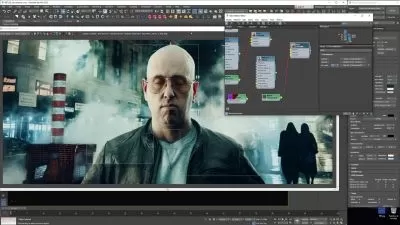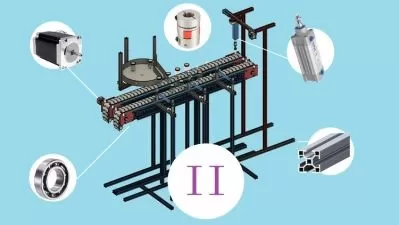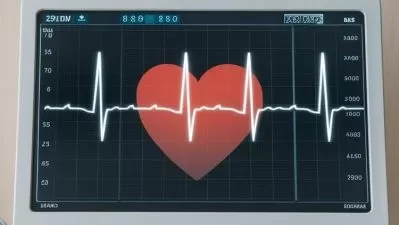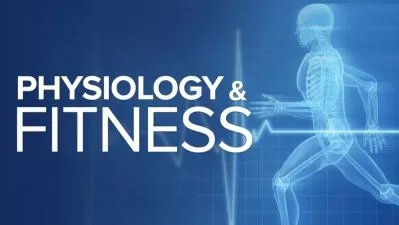Medical Robotics Course
Learntoupgrade Online
4:45:45
Description
Unlock the Future of Healthcare with Advanced Skills and Expertise
What You'll Learn?
- Medical robotics is revolutionizing healthcare by enabling minimally invasive surgeries, precision medicine, and enhanced patient care.
- The demand for medical robotics expertise transcends borders, providing opportunities for work and research on an international scale.
- Gain the skills to design, develop, and operate robotic systems for medical applications, contributing to innovation in the healthcare sector.
- Learning this field equips individuals to be part of this transformative process.
Who is this for?
What You Need to Know?
More details
DescriptionOverview:
In an era of rapid technological advancement, the field of healthcare is not far behind in embracing innovation. One such groundbreaking innovation is medical robotics. The fusion of medicine and robotics has paved the way for cutting-edge treatments, minimally invasive surgeries, and enhanced patient care. To harness the full potential of this field, a Medical Robotics Course has become essential. In this blog, we delve into the significance of such a course, its benefits, eligibility, requirements, key features, and the importance of certification.
Benefits of Learning Medical Robotics:
Revolutionizing Healthcare: Medical robotics has revolutionized the healthcare industry by enabling precise, minimally invasive procedures, leading to faster recovery times and reduced patient discomfort.
Career Opportunities: Learning medical robotics opens up diverse career opportunities. Graduates can work as robotic surgeons, biomedical engineers, researchers, or even educators.
Innovation Hub: The course fosters innovation, encouraging students to develop new robotic technologies to address healthcare challenges.
Improved Patient Outcomes: Medical robotics ensures accuracy and precision, resulting in improved patient outcomes and a lower risk of complications.
Who Can Learn:
Medical Professionals: Surgeons, doctors, nurses, and other healthcare professionals looking to enhance their skills and embrace technology in their practice.
Engineers: Those with a background in mechanical, electrical, or biomedical engineering interested in applying their knowledge to healthcare.
Students: Aspiring students seeking a career in healthcare or robotics can also enroll to gain a competitive edge.
Requirements To Study:
Educational Background: Typically, a bachelor's degree in a relevant field like medicine, engineering, or biology is required. Some courses may have specific prerequisites.
Technical Skills: Basic knowledge of programming, mathematics, and computer science can be beneficial.
Hardware and Software: Access to the necessary hardware and software for hands-on learning and simulations.
Who this course is for:
- Students and Enthusiasts: With a passion for technology and a desire to make a difference in healthcare.
- Computer Scientists: Interested in the development of robotic systems.
- Mechanical and Electrical Engineers: Interested in specializing in medical applications.
- Medical Professionals: Doctors and nurses interested in leveraging technology for better patient care.
- Biomedical Engineers: Seeking to apply engineering principles to healthcare.
Overview:
In an era of rapid technological advancement, the field of healthcare is not far behind in embracing innovation. One such groundbreaking innovation is medical robotics. The fusion of medicine and robotics has paved the way for cutting-edge treatments, minimally invasive surgeries, and enhanced patient care. To harness the full potential of this field, a Medical Robotics Course has become essential. In this blog, we delve into the significance of such a course, its benefits, eligibility, requirements, key features, and the importance of certification.
Benefits of Learning Medical Robotics:
Revolutionizing Healthcare: Medical robotics has revolutionized the healthcare industry by enabling precise, minimally invasive procedures, leading to faster recovery times and reduced patient discomfort.
Career Opportunities: Learning medical robotics opens up diverse career opportunities. Graduates can work as robotic surgeons, biomedical engineers, researchers, or even educators.
Innovation Hub: The course fosters innovation, encouraging students to develop new robotic technologies to address healthcare challenges.
Improved Patient Outcomes: Medical robotics ensures accuracy and precision, resulting in improved patient outcomes and a lower risk of complications.
Who Can Learn:
Medical Professionals: Surgeons, doctors, nurses, and other healthcare professionals looking to enhance their skills and embrace technology in their practice.
Engineers: Those with a background in mechanical, electrical, or biomedical engineering interested in applying their knowledge to healthcare.
Students: Aspiring students seeking a career in healthcare or robotics can also enroll to gain a competitive edge.
Requirements To Study:
Educational Background: Typically, a bachelor's degree in a relevant field like medicine, engineering, or biology is required. Some courses may have specific prerequisites.
Technical Skills: Basic knowledge of programming, mathematics, and computer science can be beneficial.
Hardware and Software: Access to the necessary hardware and software for hands-on learning and simulations.
Who this course is for:
- Students and Enthusiasts: With a passion for technology and a desire to make a difference in healthcare.
- Computer Scientists: Interested in the development of robotic systems.
- Mechanical and Electrical Engineers: Interested in specializing in medical applications.
- Medical Professionals: Doctors and nurses interested in leveraging technology for better patient care.
- Biomedical Engineers: Seeking to apply engineering principles to healthcare.
User Reviews
Rating
Learntoupgrade Online
Instructor's Courses
Udemy
View courses Udemy- language english
- Training sessions 78
- duration 4:45:45
- Release Date 2023/11/21















